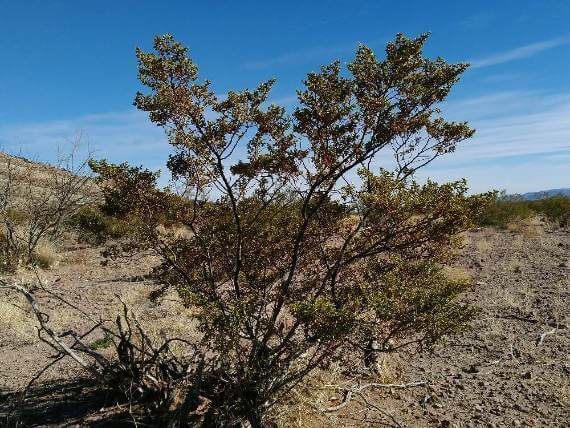(Kostenlos herunterladen) Creosote Bush Leaves

How to grow from seeds.
Creosote bush leaves. The bush may lose some of these waxy resinous leaves during extreme drought but never loses them all. But it is the pleasantly pungent smell which the leaves produce as soon as a summer rain starts that is most noticeable. One study showed that when desert woodrats eat creosote leaves the compounds within caused the rats to lose more water through their urine and feces. They also caused a reduction in the amount of energy the rats were able to absorb from food. These leaves are especially pungent after a rain and have been used as antiseptics and emetics by native peoples. Its foliage provides refuge for crickets grasshoppers and praying mantids. It flowers several times a year depending on rainfall.
These animals eat creosote bush. Resin content of the. Creosote is an evergreen shrub commonly up to six feet tall or taller that has tiny green leaves yellow flowers and grey fuzzy fruit. The external use of hot water extract of dried leaf helps to heal wounds. Many species of insect. Desert woodrats and kangaroo rats flowers. Fire keeps creosote bush in check.
The hot water extract made from dried. The smell of creosote after a good rain is the result of many volatile oils but mostly terpene a compound found in pines limonene citrus camphor pines and rosemary methanol wood alcohol and 2 undecanone spices. Creosotebush has been highly valued for its medicinal properties by desert peoples. Of mammals only the jackrabbit and only when it can find no other food as the leaves are bitter. Creosote bush larrea tridentata is an extremely tough and drought resistant plant. Known scientifically as larrea tridentata and in common parlance as the creosote bush it produces small pretty yellow flowers in spring and summer. The hot water extract of dried leaf is used as a tonic and expectorant to treat tuberculosis.
22 species of bees as pollinators. The plant displays green waxy leaves and small yellow flowers. It is so good at making efficient use of its. The creosote bush thrives in the desert. It is used as diuretic treat bowel cramps and veneral disease by indians. The leaves are shiny due to a waxy coating that prevents water loss. Creosote bush thrives under 5 000 feet.
Twigs and leaves may be boiled as tea steamed pounded into a powder pressed into a poultice or heated into an infusion.














/plant-5c531a47c9e77c0001859fd9.jpg)

















:max_bytes(150000):strip_icc()/creosote-bush-535087368-5a6b2551303713003642dcbe.jpg)






























